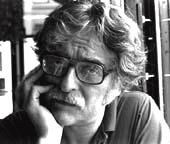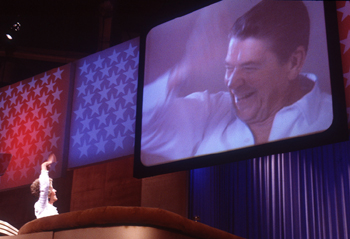And she points out that this control has reached a new height in the Bush administration. However, if you look at the history of White House photography, you can not just blame the image makers at the White House for a less than complete coverage of the President's official life. When I was first sent to supplement the official Washington team of Time Magazine, I assumed that the function of the team was to provide pictures that were different from those available through the wire services and agencies. WRONG In many cases, the photo editor was asked if there was a picture similar to one that had already appeared in the New York Times or other daily outlets. I began to feel that what was often wanted was the standard picture with the credit line of a Time photographer. Many of the Washington-based Time photographers learned to get "the opportunity" and then look for the different shot. In essence, the White House controlled access and staged events, but the photo press, with a few notable exceptions, accepted it. Dave Kennerly was covering Richard Nixon the first day I showed up in Washington. Nixon was under a great deal of pressure, and it showed. Kennerly did a roll of tight heads at one of the opportunities. Shortly after that, picture opportunities of the President in the Oval Office were temporarally eliminated with White House officials citing David's pictures in saying that the press was purposely making the President look bad. I saw the roll that Kennerly shot. There was no significant variation in the numerous frames that were a tight head. Nobody picked " the worst shot." But there was more to the story than killing the messenger. The photo boss of one newsgroup assured White House officials that his group would not release unflattering pictures if his team was readmitted. The night before President Nixon resigned, I left the press room to photograph the demonstrations outside of the White House. I was asked to stay, but my pass was a New York police pass. And, compared to those who covered the White House regularly with White House credentials, I really had nothing to lose. I covered the demonstrations, and the pictures were published.
By the way, that unexpected shot, probably because it was different, appeared in the then current issue, the year end issue and still kicks around. Y These presidential conventions are brutal. You stand on a camera platform for hours listening to drawn out speeches. Any time you leave to go to the bathroom or turn your attention to a drink of water or lose your attention, you could miss the moment. Fortunately, the conventions are visually boring with very few outstanding moments. I understand why even some photographers who were in a good position missed the Nancy Reagan shot. But I don't think it was the fault of the White House Press Office. I do think, however, that the White House Press
Office has, now, exhibited so much control on events as to eliminate
those wonderful unplanned moments which give a public figure some humanity.
I think the simplistic still pictures are counter productive. I have
much more sympathy for the President who sometimes makes mistakes and
looks a little worried on television. © Bill Pierce |
|
|
Write a Letter
to the Editor |

 The
next day, however, the White House regulars were admitted to the President's
farewell speech. I was put on the South Lawn to photograph the departure.
Unexpectedly, and only for a second, President Nixon flashed his trademark
"V" as he got on the chopper. There were a fair number of
photographers, but less than should have got the shot. I know Dennis
Brack got a good frame. But I didn't really see as many others as I
should have. I think it may have been because many photographers had
gotten used to staged events. News photography doesn't take a big brain.
But it does require amazing concentration and really good reflexes.
You can get a little relaxed on a pleasant diet of staged opportunities.
The
next day, however, the White House regulars were admitted to the President's
farewell speech. I was put on the South Lawn to photograph the departure.
Unexpectedly, and only for a second, President Nixon flashed his trademark
"V" as he got on the chopper. There were a fair number of
photographers, but less than should have got the shot. I know Dennis
Brack got a good frame. But I didn't really see as many others as I
should have. I think it may have been because many photographers had
gotten used to staged events. News photography doesn't take a big brain.
But it does require amazing concentration and really good reflexes.
You can get a little relaxed on a pleasant diet of staged opportunities. ears
later, I was on the photo platform closest to the speaker's podium at
the Republican National Convention. Nancy Reagan suddenly turned to
a projected image of her husband and waved. Mrs. Reagan turned briefly
so you could see her face. I was lucky and got the shot. Some other
photographers had the scene, but were positioned so that they were unable
to see her face or were between frames during the instant she turned.
ears
later, I was on the photo platform closest to the speaker's podium at
the Republican National Convention. Nancy Reagan suddenly turned to
a projected image of her husband and waved. Mrs. Reagan turned briefly
so you could see her face. I was lucky and got the shot. Some other
photographers had the scene, but were positioned so that they were unable
to see her face or were between frames during the instant she turned.